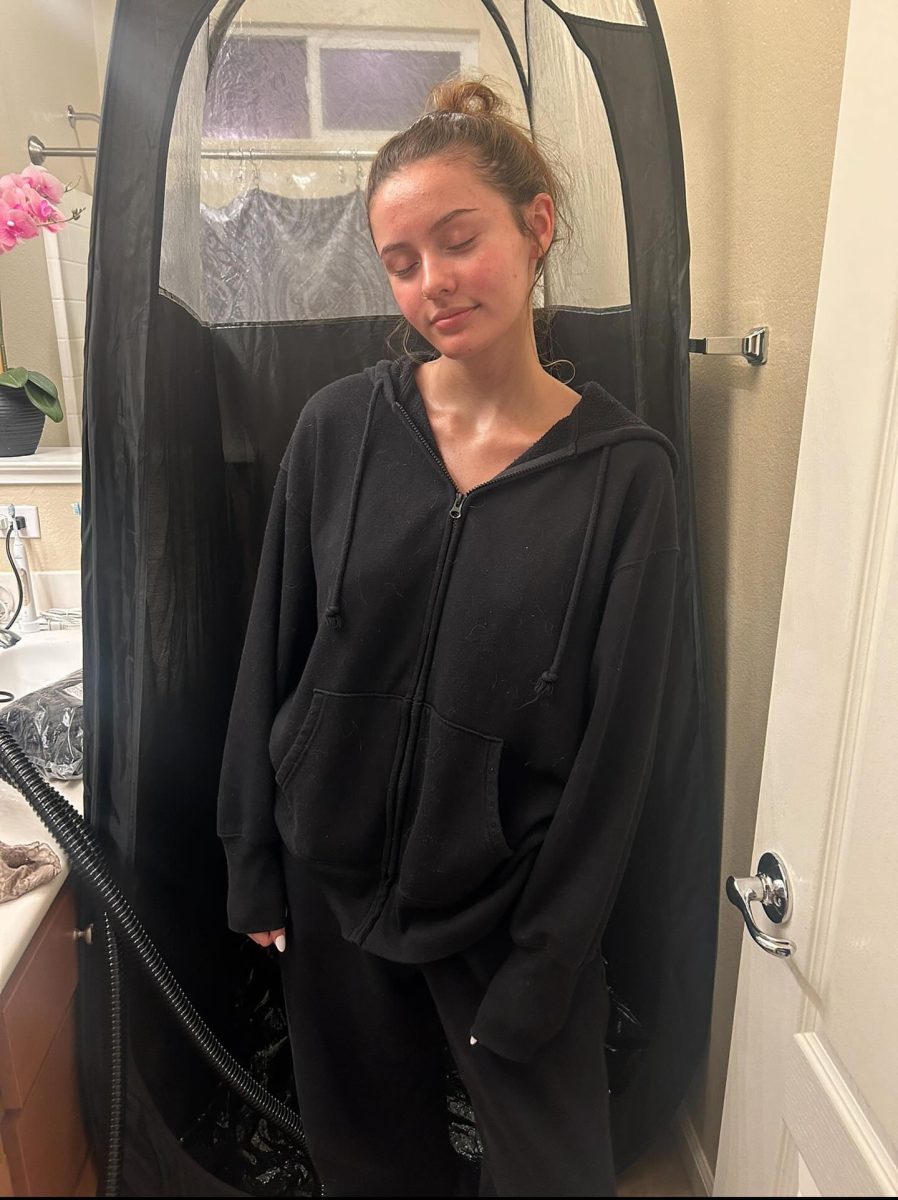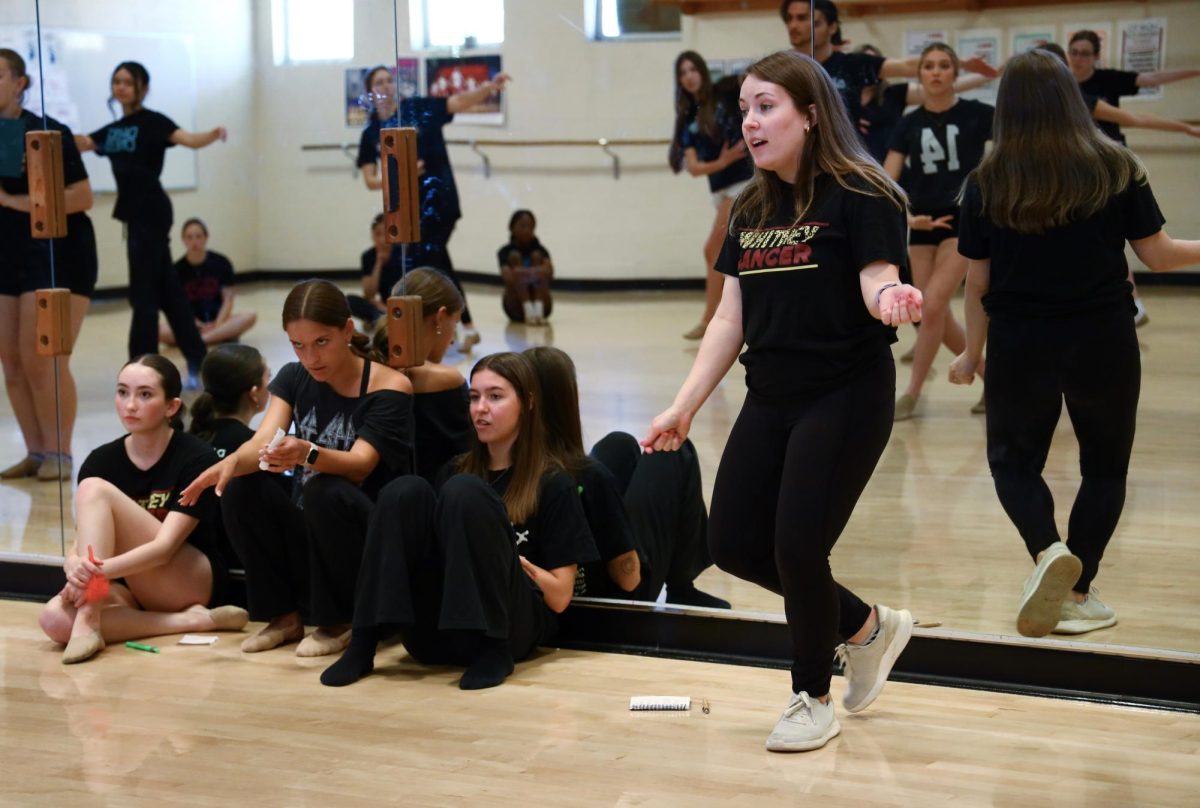New student Zeze Safi works out in P.E. Photo by Kavya Pathak.
Facing a new city, new school and new friends can make starting at a new school stressful for some. But the 22 students walking this campus for the first time must not only contend with the pressures of being new, but also with an additional setback: starting in the middle of the year.
For these students, the process began in December, when they met with Mrs. Leslie Simpson, the registrar, to get registered here.
“New students must complete a registration packet, and submit a birth certificate and immunization records,” Simpson said. “They also need to submit an unofficial transcript from their previous school, so we can understand their academic level, as well as a proof of residence showing that they live in this school’s boundaries.”
After discussing their six-year plan with Mrs. Simpson, they move on to their next step, selecting classes.
“The day after students meet with Mrs. Simpson, they meet with us so that we can put them in classes,” Mrs. Julie Poe, the counselor for the entire senior class and part of the freshman class, said.
This part of the process is most challenging for both counselors and students, as they work together with parents to try to find classes that fit with the student’s previous courses.
“We try to put students in like classes, so that they continue with a similar curriculum,” Simpson said. “We also try to match honors and AP classes to students’ previous classes.”
In order to fully asses a new student’s capabilities, counselors often ask teachers to evaluate incoming students.
“New students take a diagnostic math test to determine placement,” Simpson said, “and English and science capabilities are measured by CST scores.”
However, problems can arise when trying to match classes, due to differences in the number of classes taken per semester and the difficulty of classes offered to underclassmen.
“Choosing classes can be particularly challenging when students come from a four by four system (with four classes per semester),” Poe said. “These students may have taken a semester long course in, for example, Algebra 1, and may be ready to move on to Geometry, but cannot, since our Geometry classes are already halfway through the curriculum.”
Counselors are then faced with a dilemma: put a student into a challenging math or science course midway through the year, or allow them to skip that course for a semester.
“We have to ask ourselves if it’s fair to put students in such a difficult situation, since an overly difficult class may lead them to fail,” Poe said. “Usually we look at the problem on an individual basis and give the student options on taking an easier class or a more advanced one.”
Creating schedules for students arriving from a school with six classes per semester can also be challenging, since these students have two remaining periods that must be filled.
“After all of the student’s previous classes are matched up, we still have two more classes to put them in,” Simpson said, “and they mostly go into classes that don’t really need knowledge from first semester, like Photo I, mass media, choir, culinary, or Broadcast I.”
However, even when classes are offered at both previous schools and this one, counselors can run into problems.
“We had a freshman who transferred this semester who had taken a semester of AP Biology at his old school, a class which isn’t open to underclassmen at this school,” Simpson said. “In a case like this, we made an exception, but the student’s mother was uncomfortable with him being in class with juniors and seniors, so he ultimately did not get placed there.”
Despite efforts to match up schedules between schools, students must get used to a different level of difficulty in their new classes.
“Some of my new classes have been more difficult than ones at my old school,” Jennifer Tiet said. “My geometry class is ahead of my old one, and at my old school, all we did was watch movies in English, which isn’t the case here.”
Electives can also pose a problem to new students.
“My broadcasting class is really challenging for me,” Corey Everett said. “It’s cool, but it involves a lot of work.”
When students find that classes are too easy or too challenging, they are encouraged to contact their teachers and counselor, who help guide them to find a class that fits best.
“Mrs. (Amanda) Bannister has had some new students who are smart enough to be placed in advanced English,” Simpson said, “and these students got moved early in the semester.”
Yet, as more and more students get enrolled, the sheer number of students can overcrowd classrooms. The school is legally obligated to take in all students in its boundaries; only transfer students can be turned away if classrooms are too crowded.
“The district gives us a set number of teachers and classes based on planned enrollment for the year,” Poe said, “and if more students enroll mid-year, classes can get too full. It is a challenge finding room for them all.”
Despite the potential setbacks students can face when transferring in the middle of the year, schedules can end up being a good fit.
“I was put in guitar class at my old school, but since it isn’t offered here, I don’t have to take it anymore,” Natalie Duncan said. “My new schedule fits really well.”
by KAVYA PATHAK












